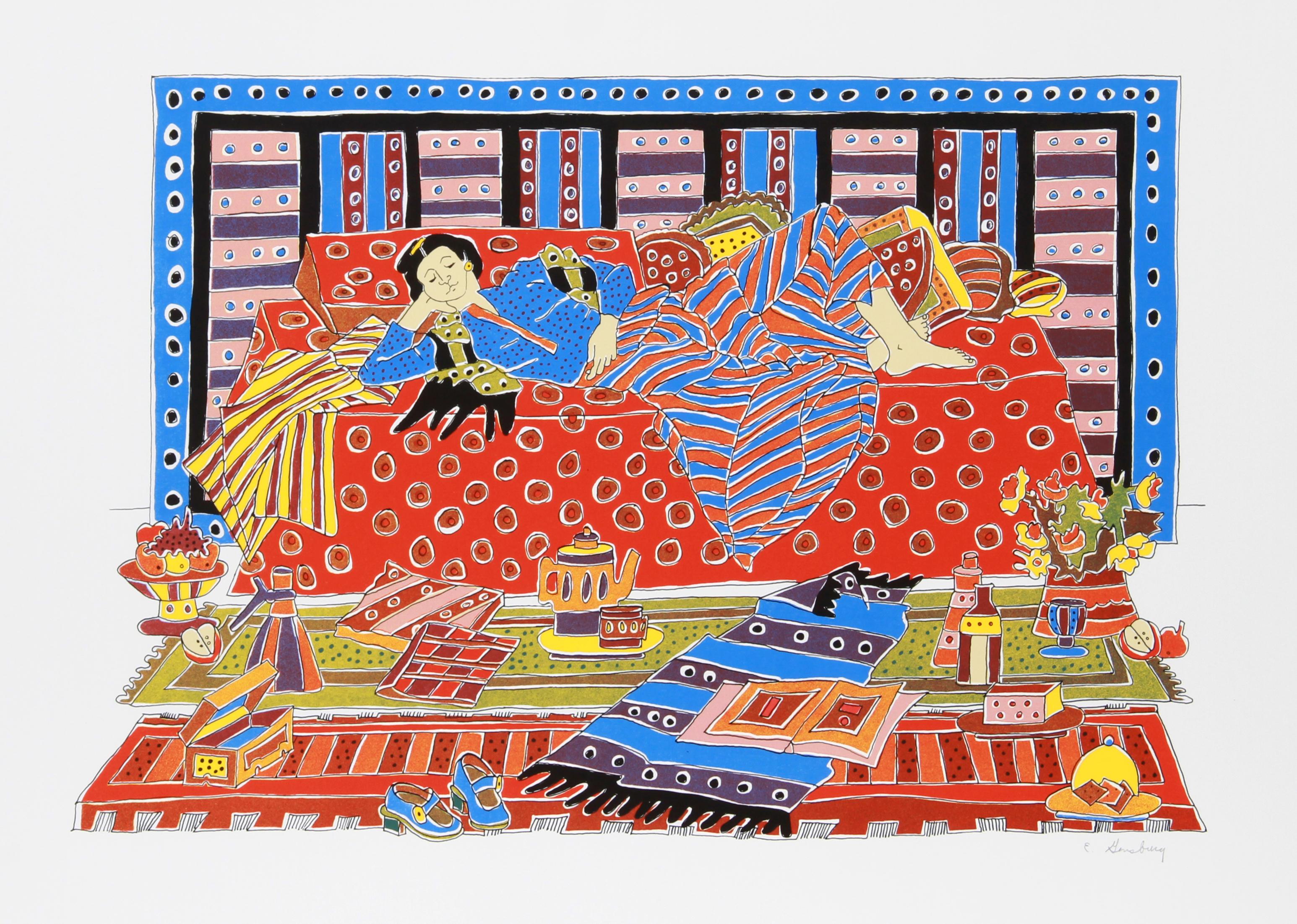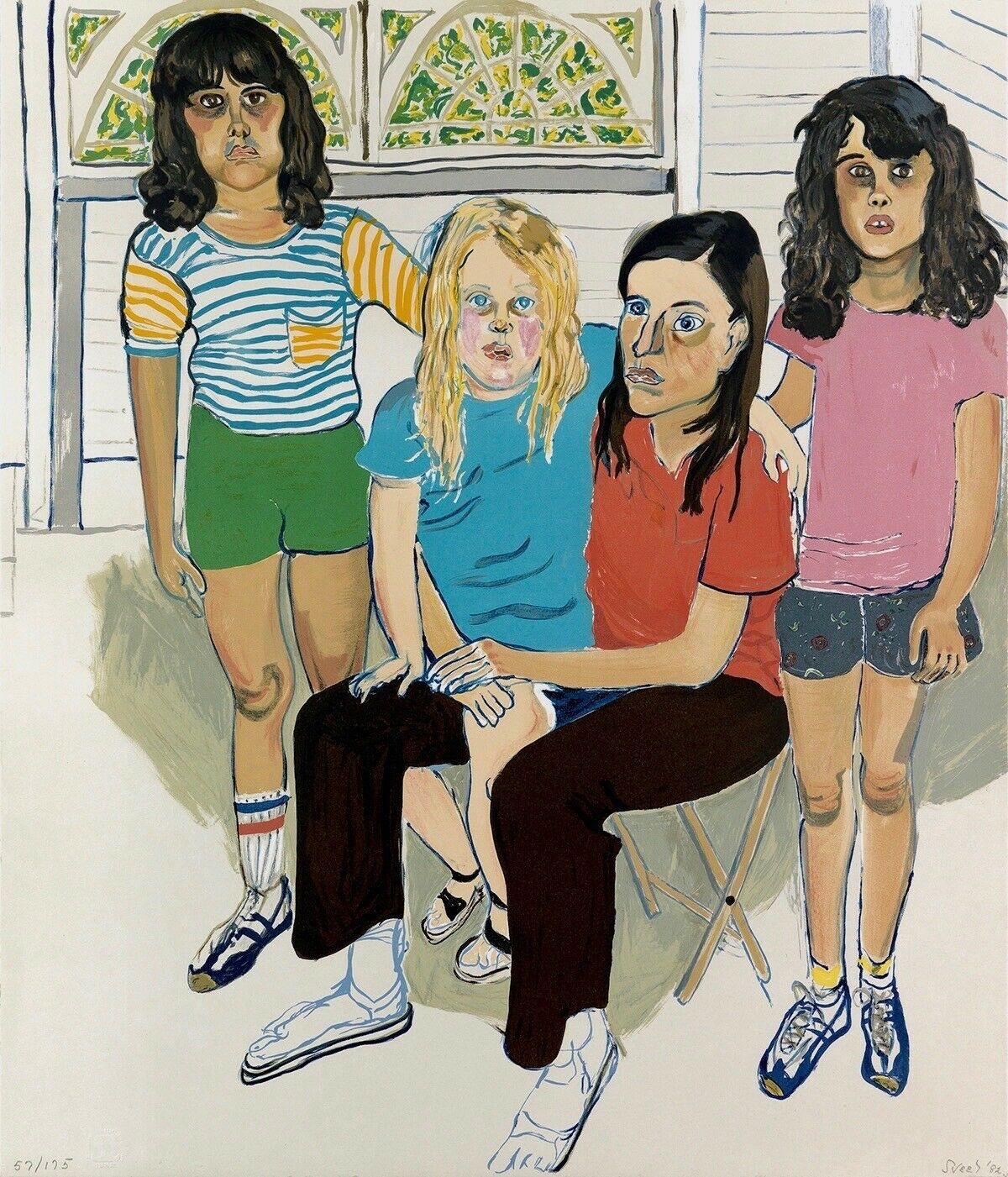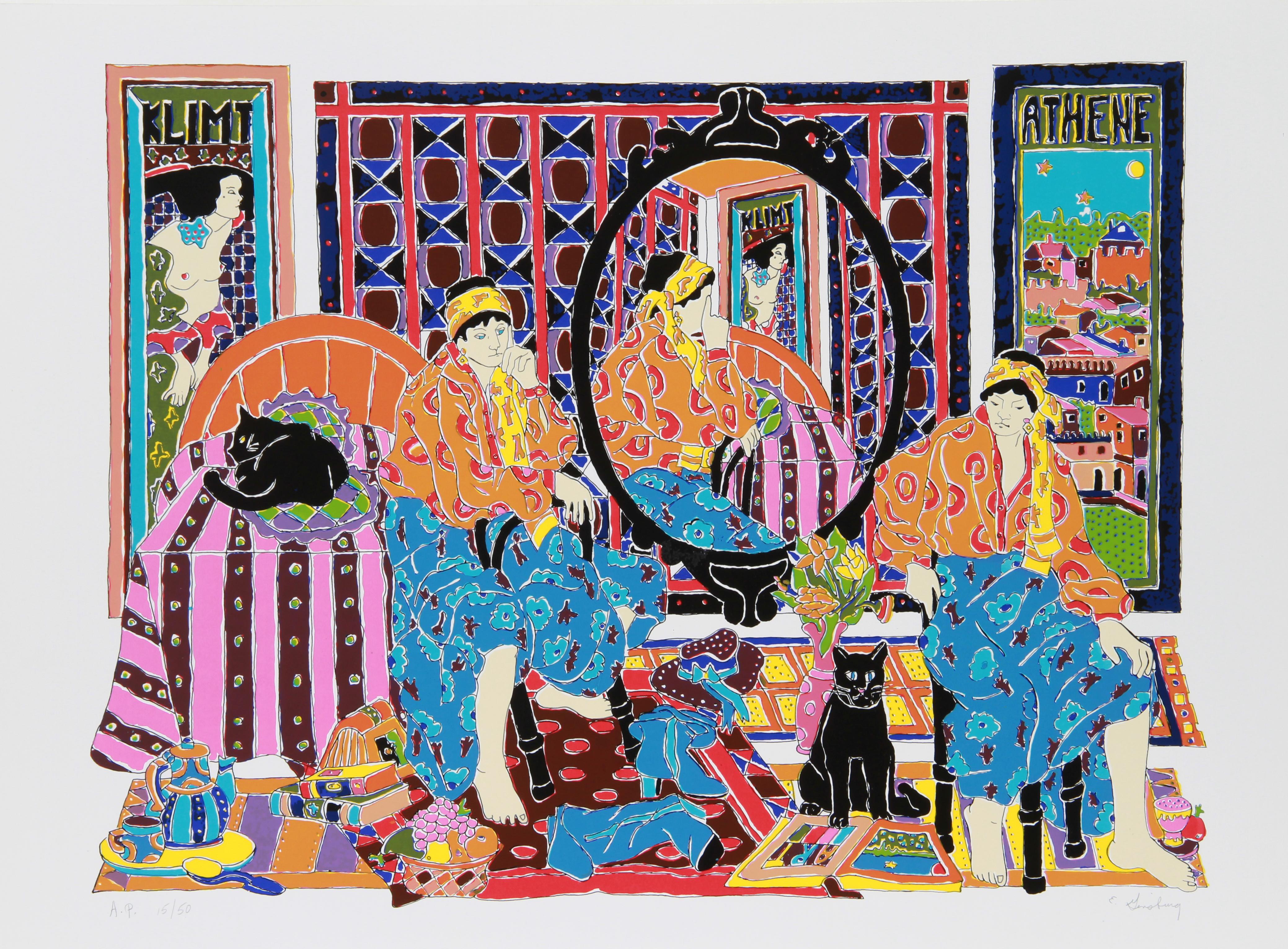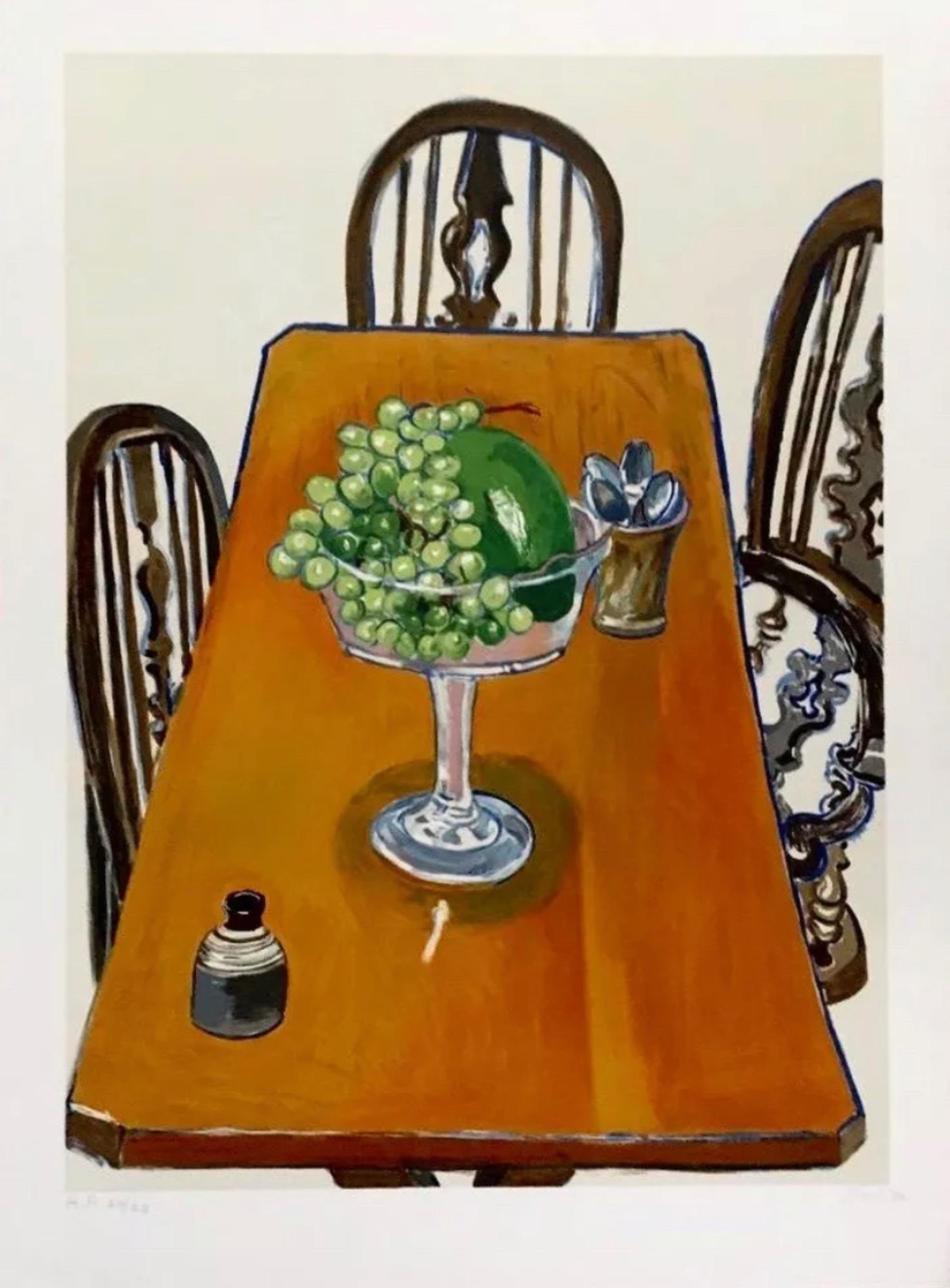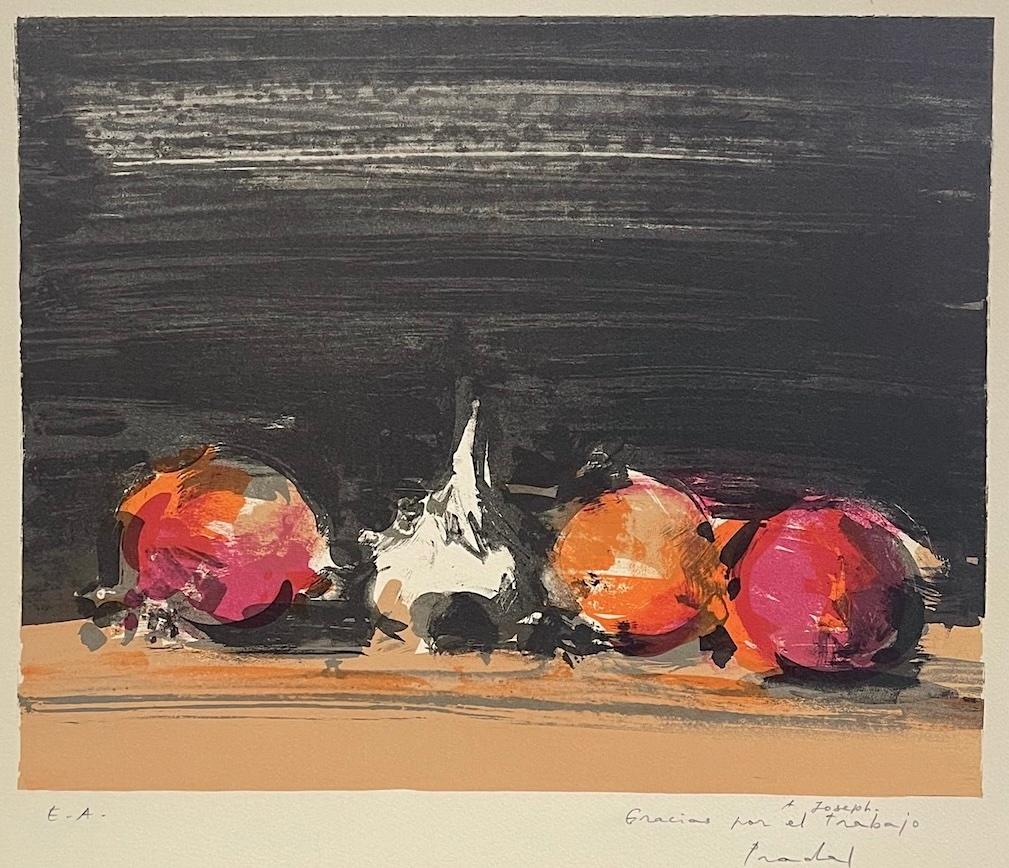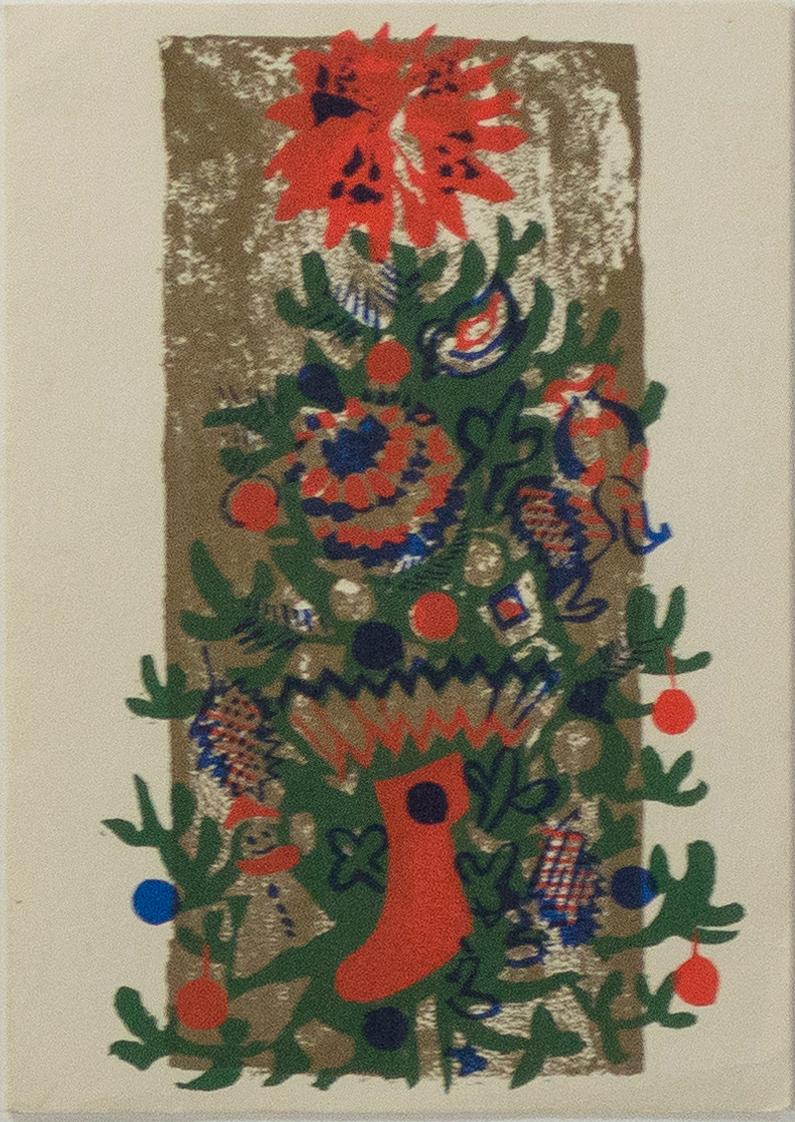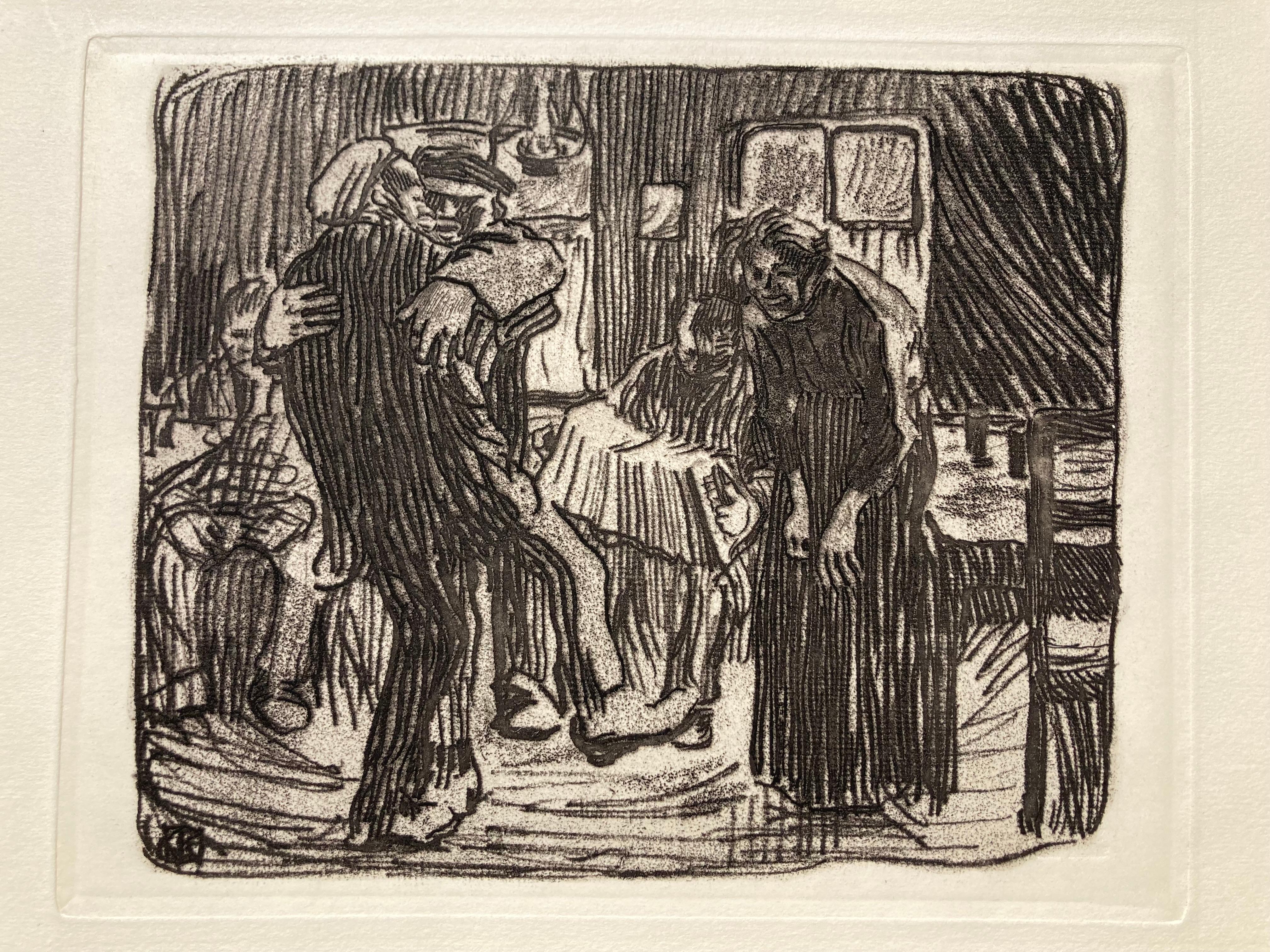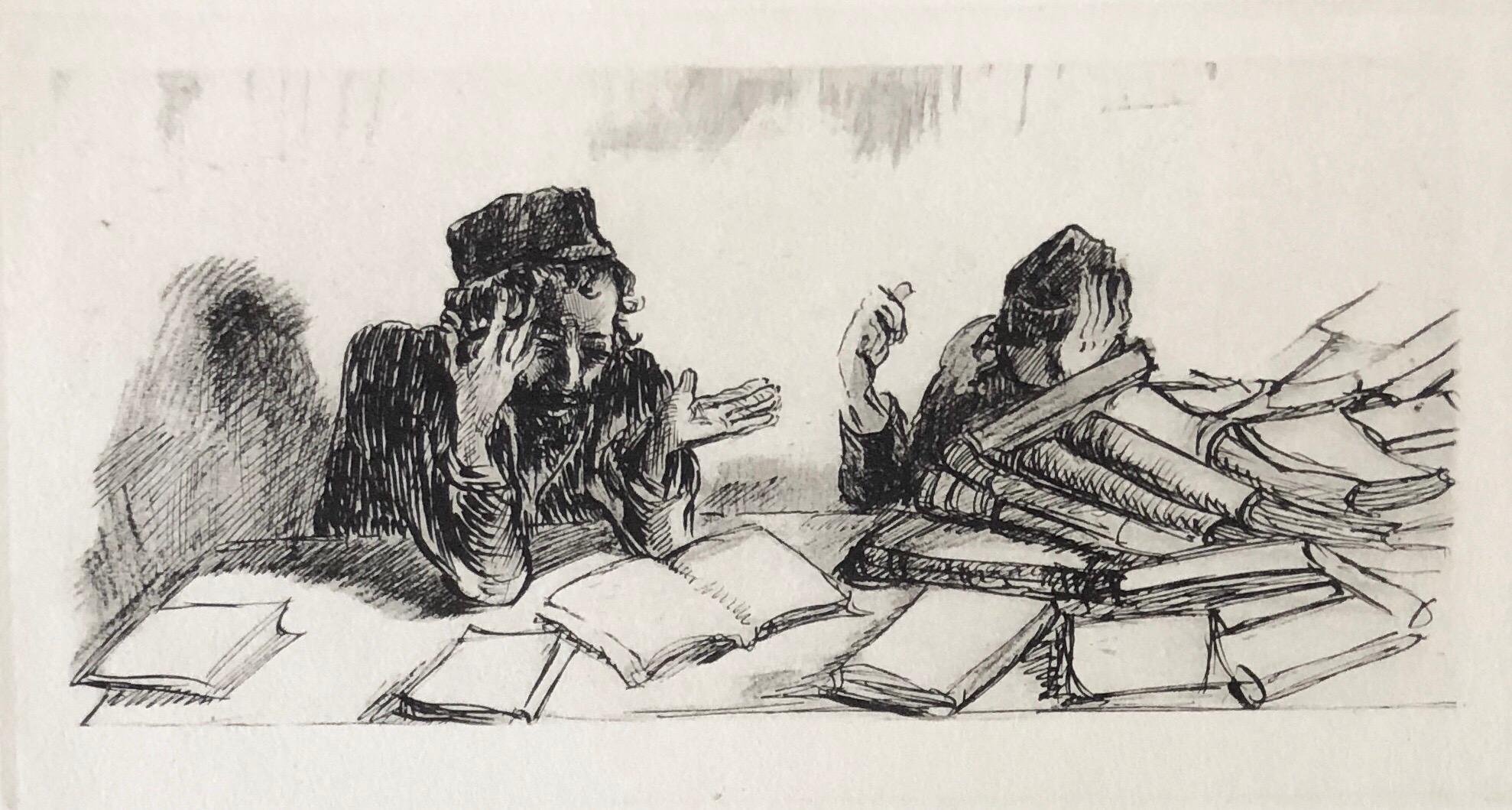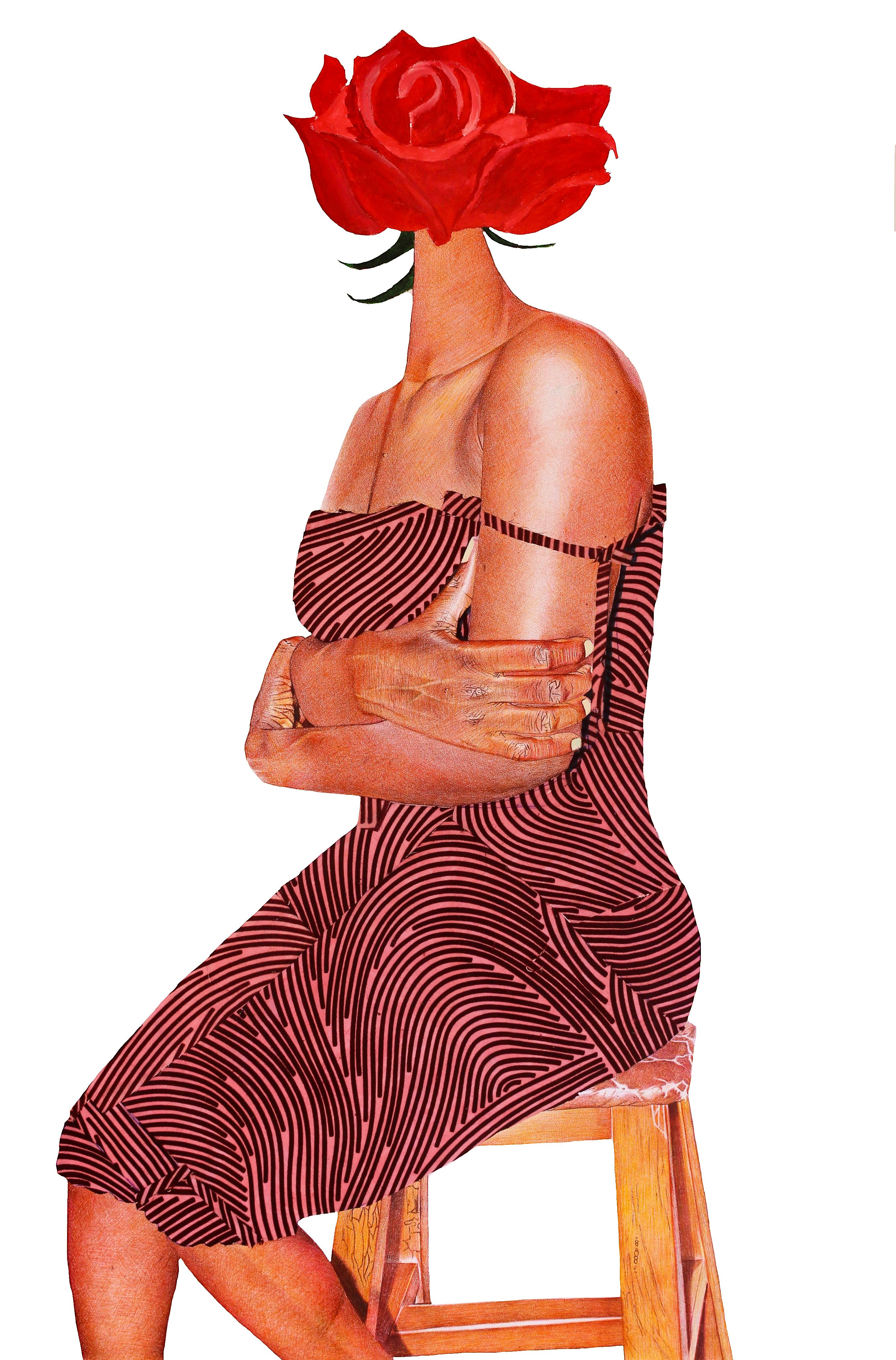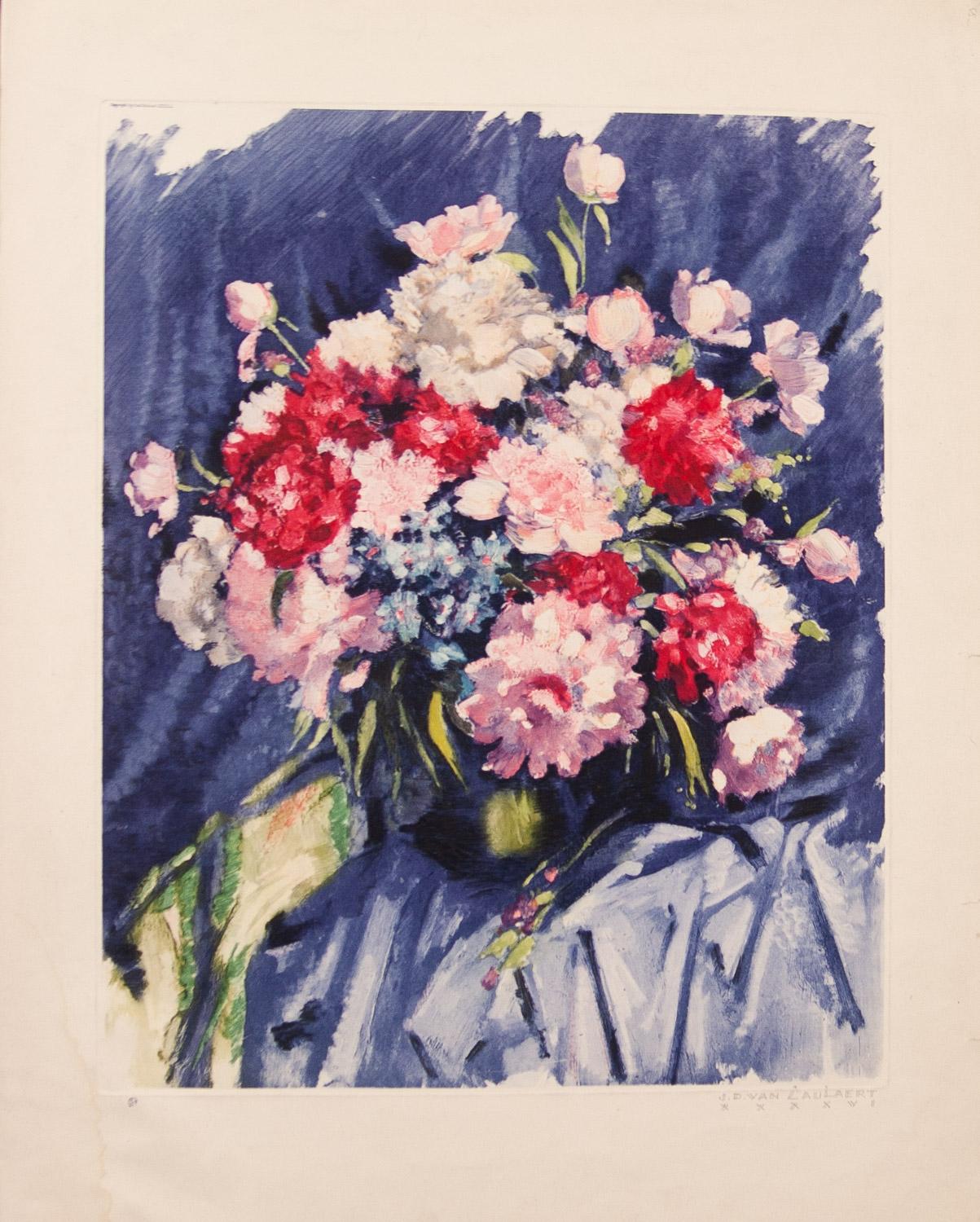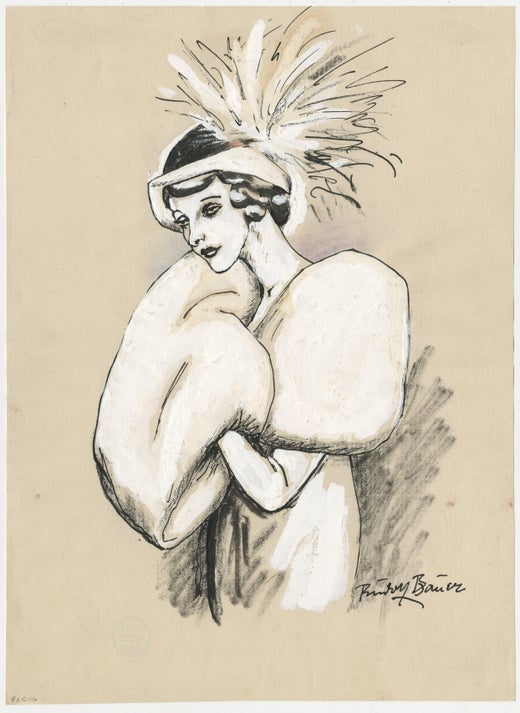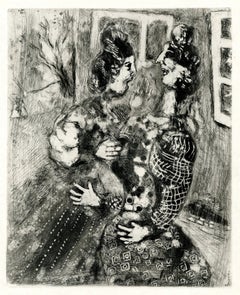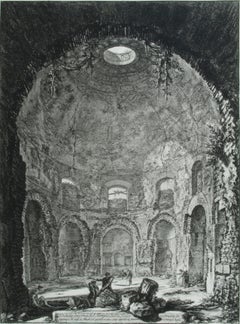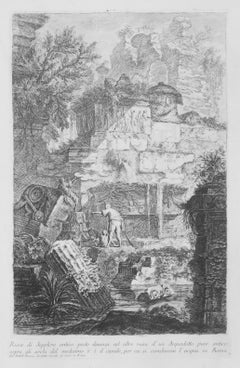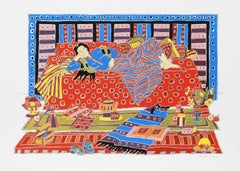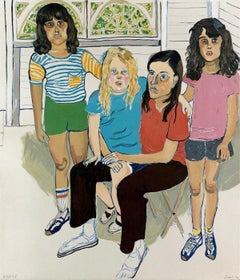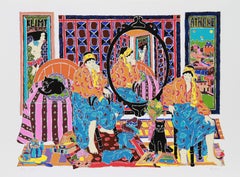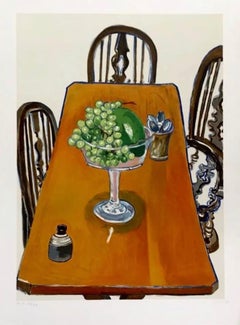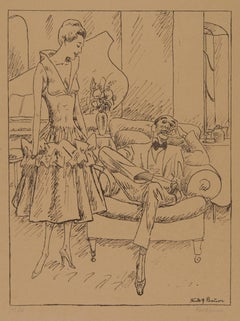
In the Salon
View Similar Items
Want more images or videos?
Request additional images or videos from the seller
1 of 10
Rudolf BauerIn the Salonc. 1910
c. 1910
About the Item
- Creator:Rudolf Bauer (1889-1953, German)
- Creation Year:c. 1910
- Dimensions:Height: 13.88 in (35.26 cm)Width: 10.5 in (26.67 cm)
- Medium:
- Movement & Style:
- Period:
- Condition:
- Gallery Location:Fairlawn, OH
- Reference Number:Seller: FA51101stDibs: LU14012525322
Rudolf Bauer
The true story of Rudolf Bauer is perhaps one of the most complex, tragic, and ironic of 20th century art history. Rudolf Bauer was a pioneering German-born artist who, along with Vasily Kandinsky, was among the first abstract artists in the world. His “non-objective” abstract style would go on to influence virtually all aspects of modern art and serve as a beacon to Pollock, Rothko, and other artists who formed the New York school of Abstract Expressionism. In the first half of the 20th century, Bauer’s works were displayed alongside such luminaries as Picasso, Chagall, Miró, Mondrian, and Kandinsky, in numerous galleries and museums throughout the world. However by the end of World War II, Bauer had stopped painting and fell into obscurity.
About the Seller
5.0
Recognized Seller
These prestigious sellers are industry leaders and represent the highest echelon for item quality and design.
Platinum Seller
Premium sellers with a 4.7+ rating and 24-hour response times
Established in 1978
1stDibs seller since 2013
785 sales on 1stDibs
Associations
International Fine Print Dealers Association
Authenticity Guarantee
In the unlikely event there’s an issue with an item’s authenticity, contact us within 1 year for a full refund. DetailsMoney-Back Guarantee
If your item is not as described, is damaged in transit, or does not arrive, contact us within 7 days for a full refund. Details24-Hour Cancellation
You have a 24-hour grace period in which to reconsider your purchase, with no questions asked.Vetted Professional Sellers
Our world-class sellers must adhere to strict standards for service and quality, maintaining the integrity of our listings.Price-Match Guarantee
If you find that a seller listed the same item for a lower price elsewhere, we’ll match it.Trusted Global Delivery
Our best-in-class carrier network provides specialized shipping options worldwide, including custom delivery.More From This Seller
View AllThe Woman and the Street
By Marc Chagall
Located in Fairlawn, OH
The Woman and the Street
Etching, 1927-1930
Signed in the plate lower right corner (see photo)
From: The Fables of La Fontaine, Plate 84
From the deluxe portfolio edition of 40 examp...
Category
1920s French School Prints and Multiples
Materials
Etching
The So-Called Tempio della Tosse, Near Tivoli. Interior Upright
By Giovanni Battista Piranesi
Located in Fairlawn, OH
The So-Called Tempio della Tosse, Near Tivoli. Interior Upright (Veduta interna del Tempio della Tosse)
"Temple of the Cough"
Etching, 1764
Signed in the plate
From: Vedute di Roma...
Category
1760s Old Masters Interior Prints
Materials
Etching
The So-Called Tempio della Tosse, Near Tivoli. Interior Upright
By Giovanni Battista Piranesi
Located in Fairlawn, OH
The So-Called Tempio della Tosse, Near Tivoli. Interior Upright (Veduta interna del Tempio della Tosse)
"Temple of the Cough"
Etching, 1764
Signed in the plate
From: Vedute di Roma...
Category
1760s Old Masters Interior Prints
Materials
Etching
Ruine di Sepolcro antico
By Giovanni Battista Piranesi
Located in Fairlawn, OH
Ruine di Sepolcro antico
Etching, 1743
Signed in the plate bottomleft in the caaption plate
From: Prima Parte, 1743
Second edition: 1750-1778
Watermark: R 37-39
A lifetime impression printed during Piranesi’s life, before the plates are moved to Paris by his sons in the 1790’s
Coniditon: Excellent/Very good
Image size: 14 5/8 x 9 3/4 inches
Reference: Robison 17 iii/V
Piranesi In Rome: Prima Parte di Architetture e Prospettive
"Although Piranesi studied architecture in Venice, he never was able to find work in the field other than a few jobs involving remodeling in Rome. While Piranesi was struggling to support his architectural endeavors upon his arrival in Rome in 1740, he spent a short period of time in the studio of master painter Giovanni Battista Tiepolo (1696-1770) in addition to his apprenticeship with Giuseppe Vasi. The first production of Piranesi’s early years in Rome and a culmination of his training under Vasi, Tiepolo, and his uncle, was the Prima Parte di Architetture e Prospettive (1743). The Prima Parte was a collection of twelve etchings of imaginary temples, palaces, ruins, and a prison. During this time, Piranesi was still developing the unique style of etching he is known for today, and as such the Prima Parte differs significantly in technique compared to later works. In the Frontispiece of the Prima Parte, Piranesi’s lines are definite and exact with very little flow to them, designed in the form of traditional etching. The detail is immaculate, and yet perspective of the piece is oddly simple and familiar to the viewer. Piranesi’s technique employs miniscule markings and lines, intricately woven together to create a stippling effect. The Prima Parte, described as “rigid” by art historian Jonathan Scott, came to be seen as a stark contrast to his later sketches, which were much lighter and freer. Influenced by the style of Tiepolo, which epitomized the lightness and brightness of the Rococo period, Piranesi adopted some of the more painterly techniques of the masters he apprenticed under. Piranesi made the medium of etching appear as though it was a sketch or a painting, hence a “freer” and more fluid design in his later works. For example, the frontispiece of the Prima Parte read as an etching to Piranesi’s audience, but in his later vedute, the style of etching almost appears to be made of brushstrokes. Moreover, at the same time Piranesi was working on the Prima Parte, he aided the artist Giambattista Nolli. There is a small section of Nolli’s map...
Category
1740s Old Masters Interior Prints
Materials
Etching
Camera sepolcrale
By Giovanni Battista Piranesi
Located in Fairlawn, OH
Camera sepolcrale
Etching 1743
Signed in the bottom left corner
From: Prima Parte, 1743
Second edition: 1750-1778
Watermark: R 37-39
A lifetime impression printed during Piranesi’s life, before the plates are moved to Paris by his sons in the 1790’s
Condition: Excellent
Image size: 14 5/8 x 9 3/4 inches
Reference: Robison 20 iii/V
Piranesi In Rome: Prima Parte di Architetture e Prospettive
"Although Piranesi studied architecture in Venice, he never was able to find work in the field other than a few jobs involving remodeling in Rome. While Piranesi was struggling to support his architectural endeavors upon his arrival in Rome in 1740, he spent a short period of time in the studio of master painter Giovanni Battista Tiepolo (1696-1770) in addition to his apprenticeship with Giuseppe Vasi. The first production of Piranesi’s early years in Rome and a culmination of his training under Vasi, Tiepolo, and his uncle, was the Prima Parte di Architetture e Prospettive (1743). The Prima Parte was a collection of twelve etchings of imaginary temples, palaces, ruins, and a prison. During this time, Piranesi was still developing the unique style of etching he is known for today, and as such the Prima Parte differs significantly in technique compared to later works. In the Frontispiece of the Prima Parte, Piranesi’s lines are definite and exact with very little flow to them, designed in the form of traditional etching. The detail is immaculate, and yet perspective of the piece is oddly simple and familiar to the viewer. Piranesi’s technique employs miniscule markings and lines, intricately woven together to create a stippling effect. The Prima Parte, described as “rigid” by art historian Jonathan Scott, came to be seen as a stark contrast to his later sketches, which were much lighter and freer. Influenced by the style of Tiepolo, which epitomized the lightness and brightness of the Rococo period, Piranesi adopted some of the more painterly techniques of the masters he apprenticed under. Piranesi made the medium of etching appear as though it was a sketch or a painting, hence a “freer” and more fluid design in his later works. For example, the frontispiece of the Prima Parte read as an etching to Piranesi’s audience, but in his later vedute, the style of etching almost appears to be made of brushstrokes. Moreover, at the same time Piranesi was working on the Prima Parte, he aided the artist Giambattista Nolli. There is a small section of Nolli’s map...
Category
1740s Old Masters Interior Prints
Materials
Etching
Carcere ascura
By Giovanni Battista Piranesi
Located in Fairlawn, OH
Carcere ascura
Etching, 1743
Signed in the plate bottom left corner
From: Prima Parte, 1743
Second edition: 1750-1778
Watermark: R 37-39
A lifetime impression printed during Piranesi’s life, before the plates are moved to Paris by his sons in the 1790’s
This image foretells Piranesi's famous set, Carceri (Prisons) which is his next creative effort.
Condition: Horizontal crease midway in the sheet associated with the manufacture of the paper.
Visible watermark verso
Small printer crease in the bottom right below the caption plate.
Image size: 14 1/2 x 9 1/2 inches
Reference: Robison 3 iii/VI
Piranesi In Rome: Prima Parte di Architetture e Prospettive
"Although Piranesi studied architecture in Venice, he never was able to find work in the field other than a few jobs involving remodeling in Rome. While Piranesi was struggling to support his architectural endeavors upon his arrival in Rome in 1740, he spent a short period of time in the studio of master painter Giovanni Battista Tiepolo (1696-1770) in addition to his apprenticeship with Giuseppe Vasi. The first production of Piranesi’s early years in Rome and a culmination of his training under Vasi, Tiepolo, and his uncle, was the Prima Parte di Architetture e Prospettive (1743). The Prima Parte was a collection of twelve etchings of imaginary temples, palaces, ruins, and a prison. During this time, Piranesi was still developing the unique style of etching he is known for today, and as such the Prima Parte differs significantly in technique compared to later works. In the Frontispiece of the Prima Parte, Piranesi’s lines are definite and exact with very little flow to them, designed in the form of traditional etching. The detail is immaculate, and yet perspective of the piece is oddly simple and familiar to the viewer. Piranesi’s technique employs miniscule markings and lines, intricately woven together to create a stippling effect. The Prima Parte, described as “rigid” by art historian Jonathan Scott, came to be seen as a stark contrast to his later sketches, which were much lighter and freer. Influenced by the style of Tiepolo, which epitomized the lightness and brightness of the Rococo period, Piranesi adopted some of the more painterly techniques of the masters he apprenticed under. Piranesi made the medium of etching appear as though it was a sketch or a painting, hence a “freer” and more fluid design in his later works. For example, the frontispiece of the Prima Parte read as an etching to Piranesi’s audience, but in his later vedute, the style of etching almost appears to be made of brushstrokes. Moreover, at the same time Piranesi was working on the Prima Parte, he aided the artist Giambattista Nolli. There is a small section of Nolli’s map...
Category
1740s Old Masters Interior Prints
Materials
Etching
You May Also Like
Women of Intellect #6, Lithograph by Estelle Ginsburg
Located in Long Island City, NY
Artist: Estelle Ginsburg, American
Title: Women of Intellect #6
Year: 1978
Medium: Lithograph, signed and numbered in pencil
Edition: 150
Size: ...
Category
1970s Expressionist Figurative Prints
Materials
Lithograph
$150 Sale Price
66% Off
The Family, Alice Neel
By Alice Neel
Located in Fairfield, CT
Artist: Alice Neel (1900-1984)
Title: The Family
Year: 1982
Medium: Lithograph on Arches paper
Edition: 57/175, plus proofs
Size: 31.25 x 27 inches
Condition: Excellent
Inscription: ...
Category
1980s Expressionist Figurative Prints
Materials
Lithograph
$11,600 Sale Price
20% Off
Klimt, Lithograph by Estelle Ginsburg
Located in Long Island City, NY
Klimt
Estelle Ginsburg, American
Date: circa 1979
Screenprint, signed and numbered in pencil
Edition of 500, AP 50
Size: 21.5 in. x 29 in. (54.61 cm x 73.66 cm)
Category
1970s Expressionist Figurative Prints
Materials
Lithograph
Jar from Samarkland, Alice Neel
By Alice Neel
Located in Fairfield, CT
Artist: Alice Neel (1900-1984)
Title: Jar from Samarkland
Year: 1982
Medium: Lithograph on Arches paper
Edition: A.P. 24/25; 175, plus proofs
Size: 38 x 28 inches
Condition: Good
Ins...
Category
1980s Expressionist Still-life Prints
Materials
Lithograph
$11,600 Sale Price
20% Off
SPANISH STILL LIFE WITH GARLIC Signed Stone Lithograph, Expressionist Style
Located in Union City, NJ
SPANISH STILL LIFE WITH GARLIC by the Spanish artist Carlos Pradal, is an original hand drawn, stone lithograph printed by hand in Paris France using traditional hand lithography techniques on buff color archival printmaking paper, 100% acid free. SPANISH STILL LIFE WITH GARLIC presents an expressionist style still life portrait depicting vegetables - three round onions with a head of garlic positioned toward the center. A broad sweeping brushstroke wash of charcoal black dominates the background creating a dramatic staging for the red and orange vegetable shapes; the off white color of the paper forms the garlic bulb creating contrast for this expressive, energetic Spanish still life composition.
Print size - 17 x 20.25 inches, unframed, very good condition, pencil signed by Pradal, inscribed E.A.(Epreuve Artiste) with personal dedication to the master printer
Image size - 13 x 16.25 inches
Year - c. 1974
About the artist:
Carlos Pradal(1923-1988) Spanish ceramist, painter and illustrator was the son of Republican deputy Gabriel Pradal from Almeria, Andalusia. In 1939, his family was forced into exile and settled in France, in Toulouse. In 1956 he obtained a Spanish license and became an auxiliary teacher. He practiced drawing and painting at the same time, following the lessons of Raoul Bergougnan.
In 1972, he moved to Paris, where he became a friend of the painters Peinado and Orlando Pelayo. When Franco died...
Category
1970s Expressionist Still-life Prints
Materials
Lithograph
'O'Tannenbaum' original color silkscreen signed on verso, Christmas tree, winter
By Ruth Grotenrath
Located in Milwaukee, WI
'O'Tannenbaum' (Artist's #30129) is an original color silkscreen print by Ruth Grotenrath, signed by the artist on verso. Influenced by the works of Expressionists like Henri Matisse and the woodblock prints of early modern Japanese artists like Katsushika Hokusai, Ruth Grotenrath's 'O'Tannenbaum' combines the expressive use of color of the former with the precision of the latter to create a Christmas card that is as vibrant as it is subtle. Depicting a pine tree decked with ornaments and stockings, Grotenrath has rendered the tree-topping star as a ball of flames to analogize the warmth and spirit of the holiday season.
Original color silkscreen
6.625 x 4 inches, silkscreen
14.375 x 11.375 inches, frame
Signed in screen on verso inside-letter
Framed to conservation standards using archival materials including 100 percent rag matting and mounting materials, Museum Glass to inhibit UV damage and reduce glare, and housed in a gold finish wood frame.
"The paintings of Ruth...
Category
1940s Expressionist Interior Prints
Materials
Screen
